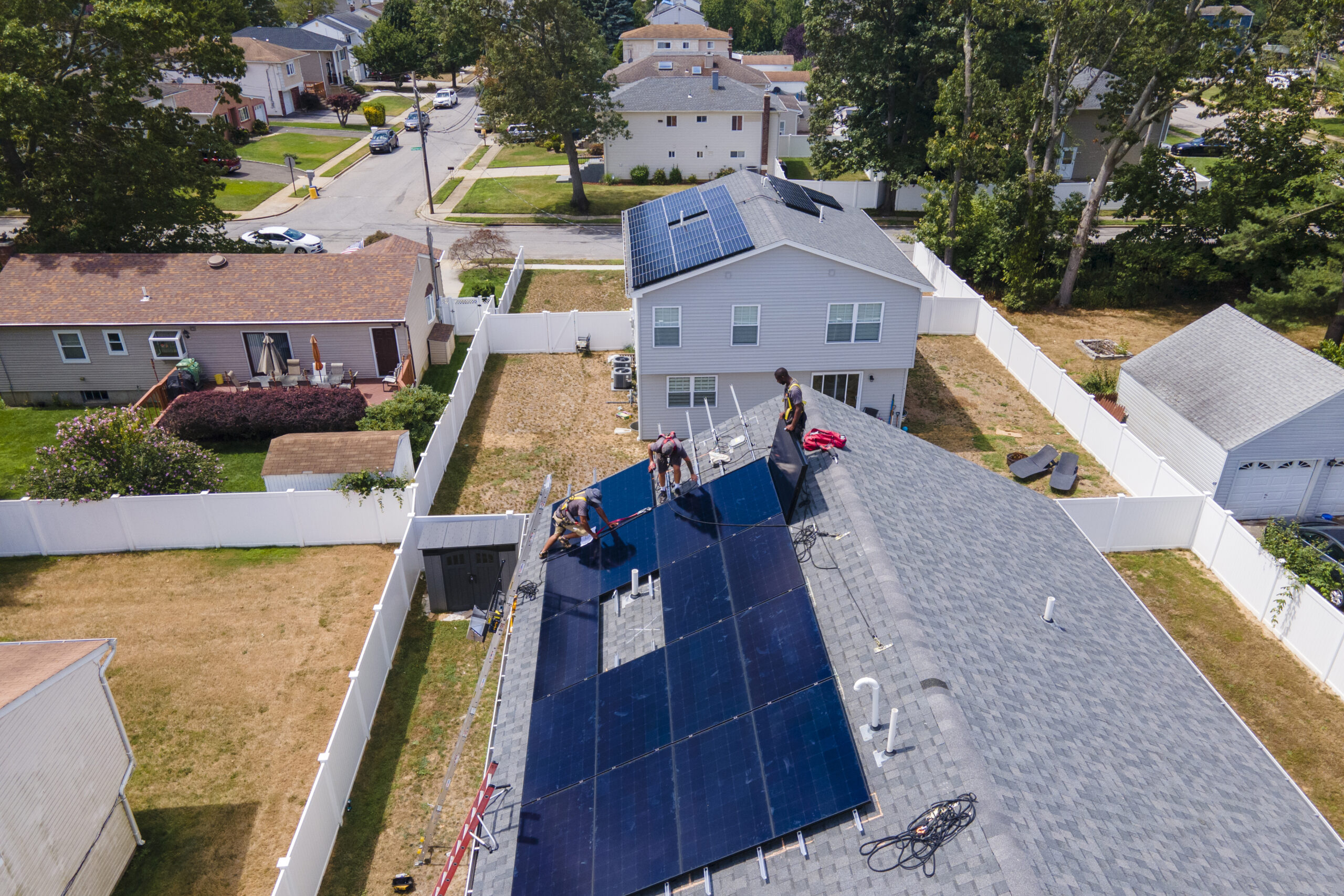

[embedded content]
Consumers are falling prey to scams that have proliferated under largely unregulated loan programs designed to help homeowners make energy-efficient upgrades to their properties.
Consumer groups allege the program is often used to sign consumers on to high-risk, high-interest-rate loans, often with little knowledge of the terms of repayment or the possibilities of mortgage default and foreclosure.
Residential Property Assessed Clean Energy programs are a type of loan overseen by state or local governments that allows private lenders to fund certain energy-efficient and renewable energy projects that often carry high upfront costs.
These projects range from the installation of solar panels or more efficient doors and windows to water efficiency upgrades and in-home electric vehicle charging.
But there are few protections afforded to consumers who utilize the loans, according to consumer protection groups. Unlike other loans, PACE financing is secured through a property lien placed on a borrower’s home and does not require lenders to weigh factors such as a borrower’s credit score or history before lending the money. They also require zero down payment, an alluring benefit for many borrowers.
But the terms of repayment are stringent: PACE loans are repaid through the borrower’s property tax — putting consumers at increased risk of delinquency, tax default, and, ultimately, foreclosure if they fail to adhere to the terms of repayment.
Consumer groups have been sounding the alarm about PACE loans, pushing for federal regulation and more transparency for borrowers, which they say is increasingly important as the number of loans funded through the program continues to soar.
Natural disaster hardening
PACE loans are not new. But application rates have ballooned in recent years, according to the most recent estimates, as more homeowners eye the loans as a way to make upgrades to their homes and protect against natural disasters, such as wildfires and hurricanes. (It is difficult to ascertain the exact number of PACE applications since they are obtained by state and local offices, but CFPB estimates and reports from California’s Department of Financial Protection and Innovation have helped illustrate the rise.)
Certain insurance companies, including many in California (which has witnessed a mass exodus of property insurance providers in recent years), prioritize coverage for homeowners who have taken these home-hardening steps, giving consumers an added incentive to make the upgrades.
But these upgrades are not cheap. Roof replacements, which are the most common type of natural disaster hardening project and are increasingly necessary in many hurricane-prone states, average between $10,000 and $20,000 or more, depending on hourly wages or the square footage of a home.
Interest rates for the loans also range between 8% and 9% — which, in many cases, can end up doubling the project’s initial cost, according to data collected by the Consumer Financial Protection Bureau.
“PACE loans may have certain benefits, but it can put you at risk of losing your home if you cannot afford the payments,” the Consumer Financial Protection Bureau states on its website in large, bolded print. “Understand the risks before signing up.”
Lack of regulation, supervision
There are few protections in place to protect consumers from being taken advantage of by PACE loans, a spokesperson from the Consumer Financial Protection Bureau told the Washington Examiner.
After studying 200,000 PACE loan applicants over a six-year period, CFPB concluded in a report that PACE loans are linked to increases in negative credit outcomes, higher rates of mortgage delinquency, and a whopping 88% average increase in property tax bills.
What’s worse is that lenders are also widely unsupervised: Many lenders go door-to-door to solicit sales — and disproportionately target lower-income communities, according to the National Consumer Law Center, which described the lack of supervision as leading to an “avalanche of PACE abuses.”
PACE loans have been targeted by “bad actors,” they said, which “have preyed upon low-income consumers, older adults, and homeowners of color.” In certain states, lenders will go into areas with a majority of non-English-speaking residents or elderly residents, as documented in a California class-action lawsuit.
These problems have gained more attention in recent years as more homeowners apply for funding to make their homes more efficient and protect against natural disasters.
Certain states, including California and Florida, have either banned PACE loans outright or taken steps to better regulate the program.
Most recently, Florida state lawmakers introduced two bills this year to reform its PACE program and increase consumer protections — a step they described as “long overdue” amid an uptick in consumer complaints of predatory lending practices.
Meanwhile, CFPB is leading the charge to regulate the loan program at the federal level. In 2023, it introduced a rule aimed at regulating PACE loans and financing nationwide.
The proposed rulemaking, which has earned the support of NCLC and other groups, would give CFPB the authority to dictate repayment rules for PACE loan financing, adjust disclosure requirements to better fit PACE loans, and help customers understand how the loans affect their property tax payments.
It would also require lenders to assess the ability of an applicant to repay the loan and apply provisions from the Truth In Lending Act for any violations — something the group said is necessary due to a lack of lender supervision.
“When unscrupulous companies bait homeowners into unaffordable loans with exaggerated promises of energy bill savings, this can lead to serious financial distress,” Rohit Chopra, the director of CFPB, said in a statement.
“As a preliminary matter, we have determined that certain aspects of PACE financing present consumer risks, which can lead to unaffordable payments,” a CFPB spokesperson told the Washington Examiner, responding to a request for comment.
Incomplete projects, fraudulent signatures
The scams that proliferated under some PACE lenders were highlighted most recently in Los Angeles County, which in March agreed to pay residents $12 million to settle a class-action lawsuit over its now-shuttered PACE program.
The lawsuit accused the county of failing to step in to protect vulnerable residents who were being targeted by lenders and looking the other way for years despite hundreds of complaints.
Many plaintiffs said they were unaware of the terms of the PACE loan, as lenders targeted Spanish-speaking neighborhoods, while others said the contractors they hired never showed up to finish the projects.
Others said they had never signed the paperwork in the first place — their signatures, they said, had been forged outright.
In filing the lawsuit, then-Los Angeles City Attorney Mike Feuer described the actions as “outrageous.” “If the facts as we allege prove true,” he said, it is “among the most devastating scams that I can recall in my career.”
Though Los Angeles County ended its PACE loan program in 2020, many plaintiffs said in March that they were continuing to recover from the financial devastation and years they spent living in constant fear of foreclosure.
“For years, we’ve struggled to pay our bills because of our PACE loan,” Zenia Ocana, one of the plaintiffs in the case, said in response to the settlement.
CLICK HERE TO READ MORE FROM THE WASHINGTON EXAMINER
It is “such a relief,” she added. After seven years, she said, “I finally feel like we can breathe again.”






